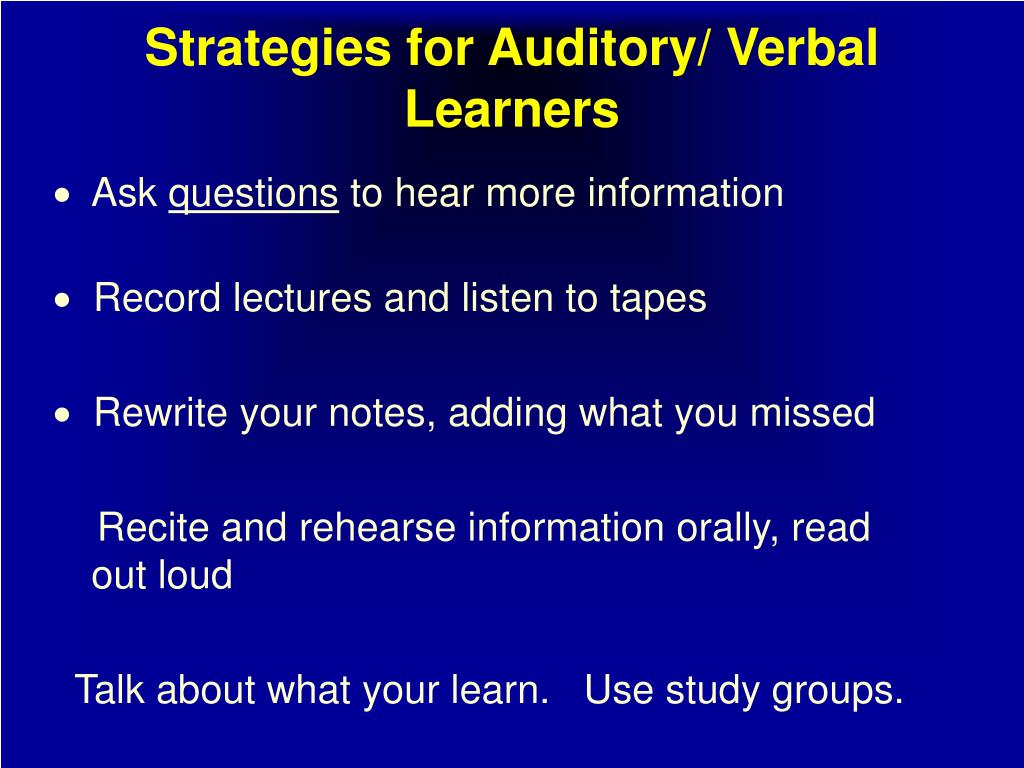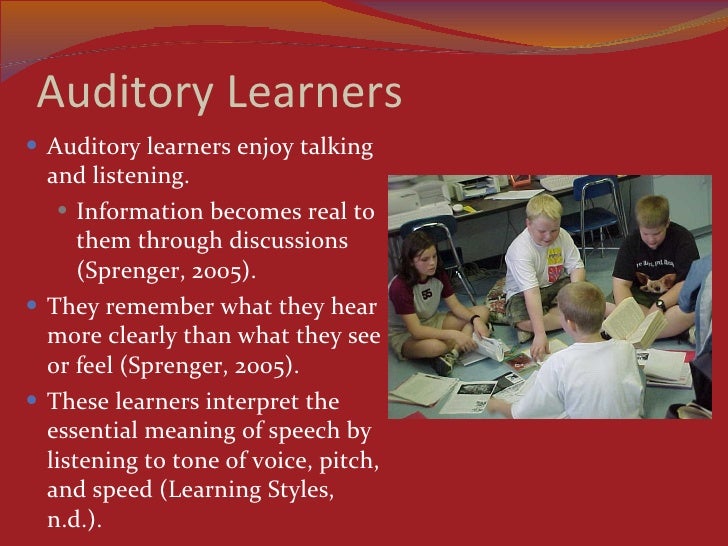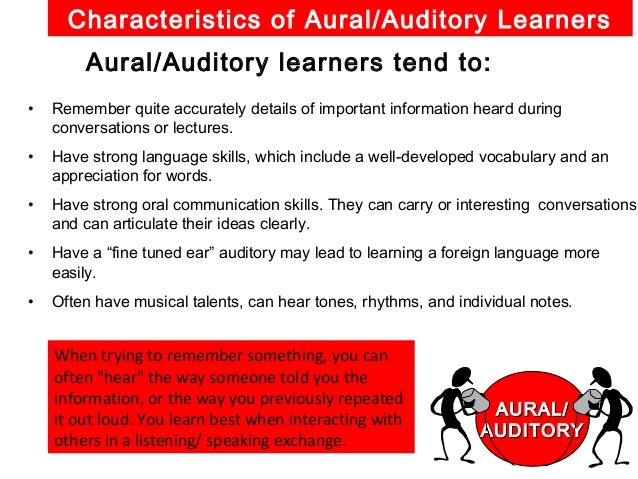

Listening to stories, lectures, and speeches is the best way for auditory learners to learn.ģ. Visual learners, as opposed to auditory learners, learn best by watching and looking at visuals. Visual learners learn best by seeing visuals or images, whereas auditory learners learn best by hearing and reading words.Ģ. Auditory learners can learn through listening, whereas visual learners can learn through observing. The second phase involves memory consolidation, which stabilizes and makes available the encoded representations for subsequent use.ĭifference between Visual Learning and Auditory Learningġ. The initial representation of an auditory event as a pattern of brain activity occurs in the first phase. It is split into two stages: encoding and consolidation. Auditory learning is the most complicated of human learning processes. Hearing, speech perception and production, language acquisition and development, and sound localization are all examples of auditory learning. Passive listening was considered to be a sort of “hearing,” whereas active listening was considered to be a form of “speaking”.Īuditory learning is the process of learning to interpret and respond to essential communication sounds. Prior to this point, learning was thought to be a type of passive receiving (as opposed to active or productive reception). Visual learning can be used in any subject, but it is most commonly utilized in mathematics, science, and English.Ī brief history of the phrase “auditory learning” Auditory learning is a relatively new phrase that was initially used to describe learning by listening in the 1940s and 1950s. Learning visually is easy on the mind, therefore it benefits people who have trouble remembering things or paying attention. It is ideal for children and people who have difficulty reading, writing, or comprehending. People with dyslexia and vision problems may be able to use visual learning since it requires a distinct set of abilities from those with which they struggle. It is a very effective method of learning. It also enables people to learn more efficiently because they can see what they are learning rather than relying on memory. Visual learning is predicated on the idea that the human brain understands visuals faster and more easily than words.


It differs from traditional learning in that it emphasizes pictures over words and text as the major learning instrument. In recent years, visual learning has grown in popularity as a method of learning.
Auditory learner strategies how to#
In this post, we’ll look at the benefits and drawbacks of each learning style, as well as how to use them effectively in your own learning. While some research implies that visual learners benefit more from pictures and other visuals, others believe that auditory learners benefit more from the spoken word. ask for the student to talk to you regularly about what they are learning.For decades, people have debated whether learning style is best for whatever piece of information.give them lots of individual attention and instruction.allow times when the classroom is silent then times with quiet music.explain information through songs, raps and poems.encourage students to explain topics to each other.use technology with sound, music or speech, such as computers, CDs, videos or musical instruments.sit where you can hear the teacher well.repeat information with your eyes closed.If you are an auditory learner, study works best if you: If you recognise these traits in your children, or the children you are working with, you can help them to learn these strategies too. Recognising if you are an auditory learner is a great starting point. Learning strategies for auditory learners remembering conversations, music and lyrics.

detecting changes in speech, tone and emotions.They may be slow readers and find it hard to understand graphs and diagrams or read maps.Īuditory learners often work in areas such as writing, journalism, teaching, law, languages and speech pathology. They often play musical instruments and sing or hum to themselves when busy. When listening, they often look distracted, and like they are listening to their thoughts, with their eyes looking down to the right. Noise and music is very distracting and they don’t benefit as much as other learners from pictures or practical activities. They may talk a lot and interrupt others. They often memorise best by hearing and speaking out loud. Only 30% of school students are auditory learners. Traits of auditory learnersĪuditory learners understand information best when they are given verbal instructions. The second way the brain can process information is by listening. In this series, we are exploring different learning styles.


 0 kommentar(er)
0 kommentar(er)
